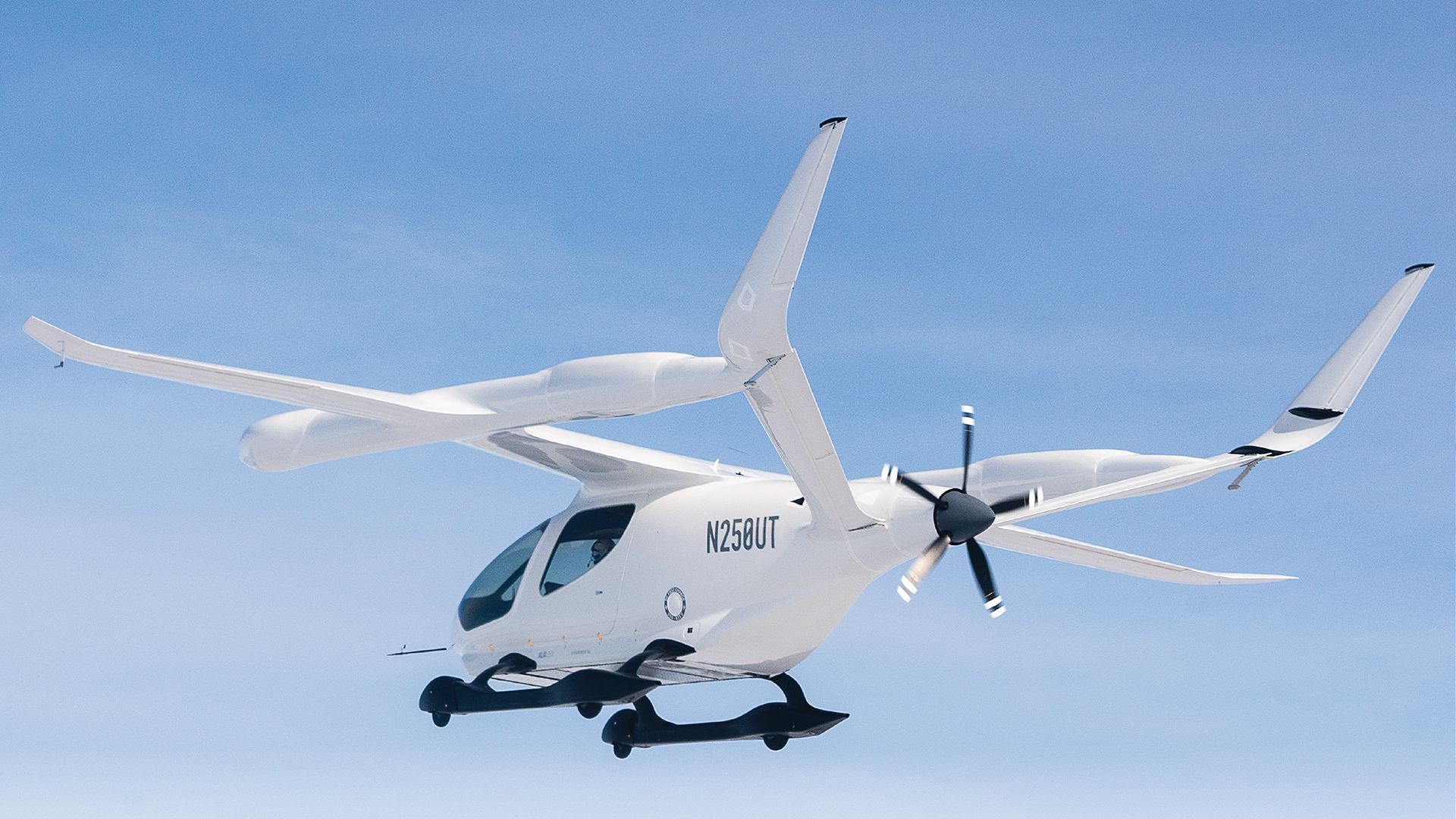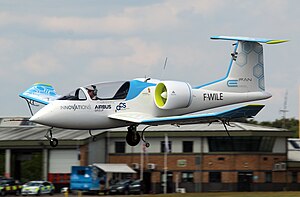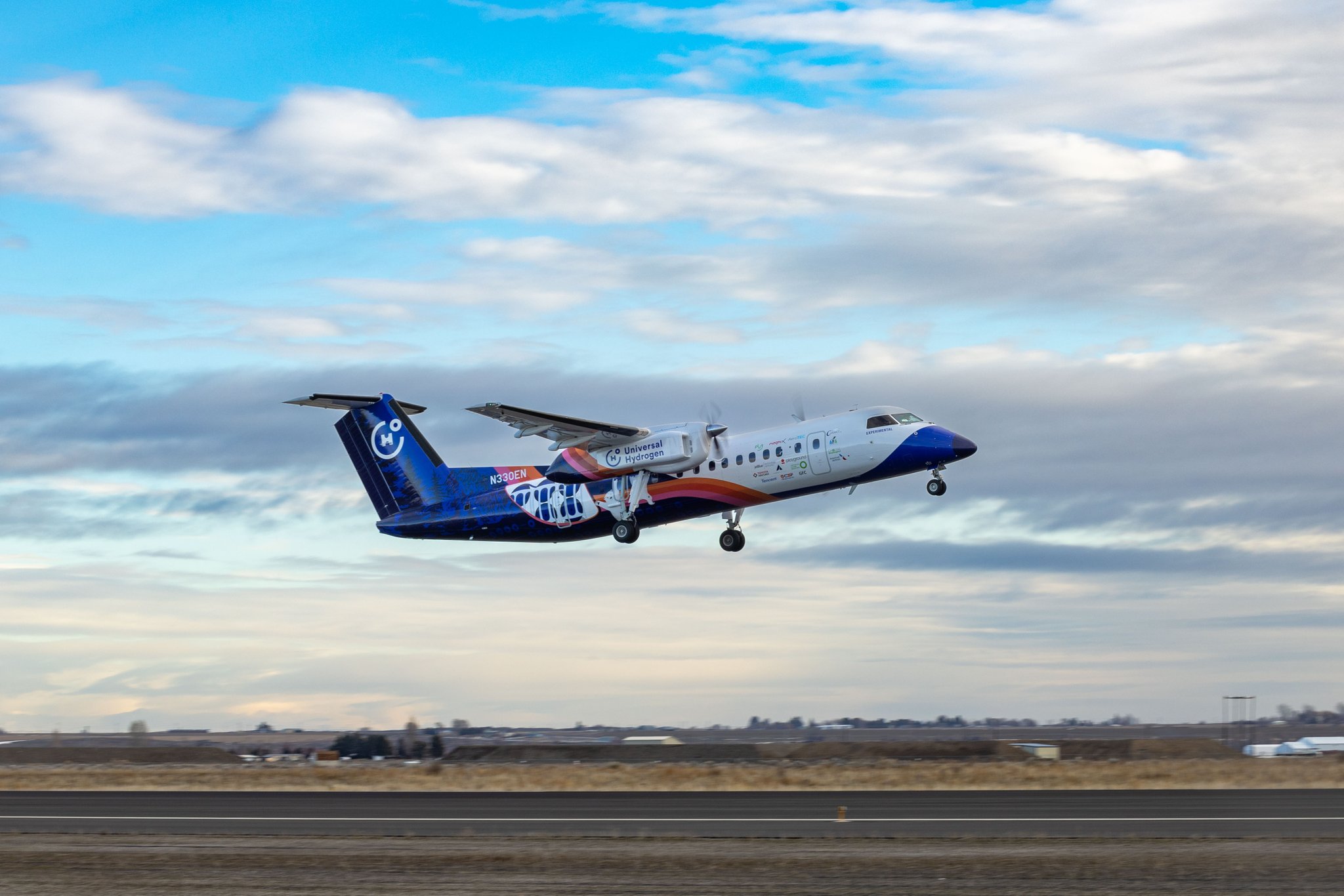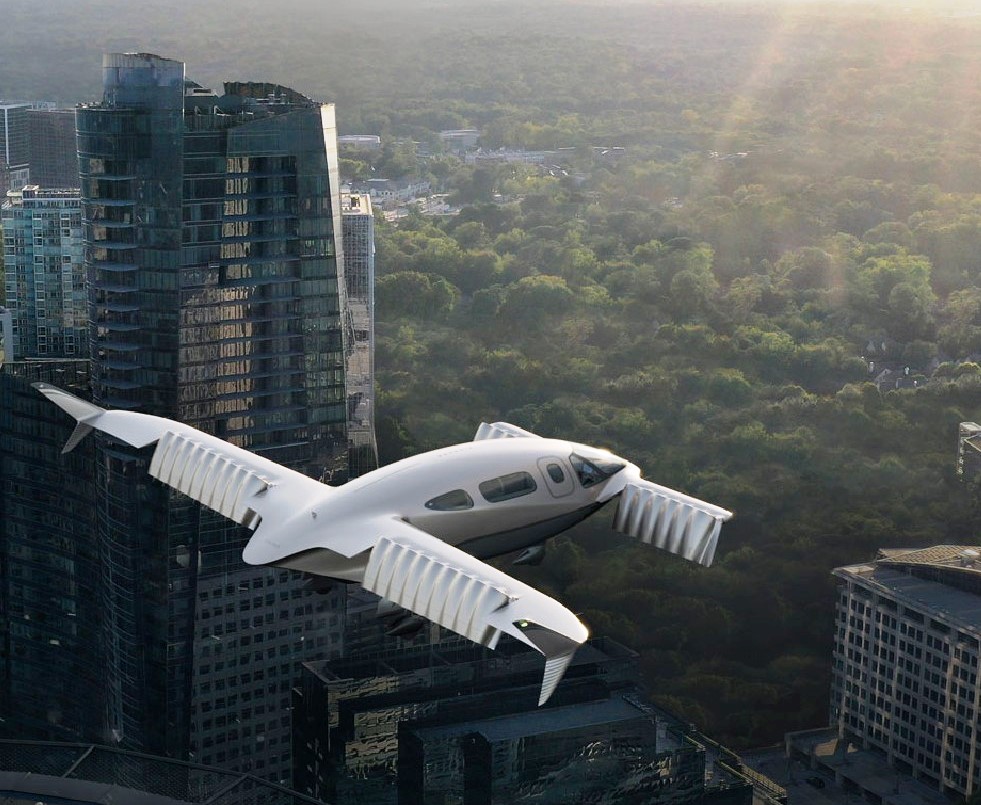Leeham News and Analysis
There's more to real news than a news release.
Bjorn’s Corner: Air Transport’s route to 2050. Part 5.
January 17, 2025, ©. Leeham News: We do a Corner series about the state of developments to replace or improve hydrocarbon propulsion concepts for Air Transport. We try to understand why the development has been slow.
We have covered why the technical progress of battery-based aircraft has been slow. Now we look at what type of missions it can do this decade and beyond and why the limitations.
Figure 1. The Diamond eDA40 electric trainer. Source: Diamond. Read more
Bjorn’s Corner: Air Transport’s route to 2050. Part 4.
January 10, 2025, ©. Leeham News: We do a Corner series about the state of developments to replace or improve hydrocarbon propulsion concepts for Air Transport. We try to understand why the development has been slow.
We listed the different projects in the second Corner of the series that have come as far as flying a functional model or prototype. In Part 3, we went through some of the causes of the slow growth. It was a mix of inexperienced startup managments, all wanting to be the new Elon Musk but lacking elementary knowledge in the aeronautical field, to what is the real hard part of an alternative propulsion concept.
Many startups developed new electric motors for eAirplane or eVTOL use, a relatively straightforward development when the real hard part is the batteries. We described how batteries differ significantly from fuel as an energy source in Part 3.
Now, we add a market aspect that is poorly understood by most players.
2025 remains another year for recovery in commercial aerospace
Subscription Required
By Scott Hamilton
Jan. 6, 2025, © Leeham News: Don’t look for any dramatic new product launches in 2025.
 Nor should you expect any dramatic news, absent global upheaval of some kind.
Nor should you expect any dramatic news, absent global upheaval of some kind.
This year is going to be yet another year dominated by recovery. Recovery from the COVID-19 pandemic, which officially ended in 2022. Recovery by the supply chain. Recovery for Pratt & Whitney’s nearly decade-long problems with its Pure Power GTF engines supplying the Airbus A220, A320 family and Embraer E2 jets. Recovery by Airbus from its production and delivery delays. Recovery by Boeing from its series of self-inflicted crises, now beginning the sixth year.
There is just no getting around the fact that the commercial aerospace industry isn’t a smooth-running industry. It’s a long way from 2018, when all sectors were running smoothly. There is still a long way to go to recovery.
Here’s LNA’s take on what’s to come this year.
Clean Joule nears opening SAF factory in Utah
By Scott Hamilton
Nov. 8, 2024, © Leeham News: The commercial aviation industry thinks Sustainable Aviation Fuel (SAF) is the best alternative energy to pursue to meet the lofty goal of achieving Net Zero carbon emissions by 2050.
Plenty of people are skeptical, both of SAF being the best answer and of achieving the 2050 target date.
But a development company called CleanJoule is betting big on SAF’s future. Within the next few months, it plans to open a major production facility in Utah.
The company’s financial backers include Frontier, Wizz, and Volaris airlines, and their major investor, and Indigo Partners. Lufthansa Airlines and several US government agencies collaborate with Clean Joule.
Clean Joule was founded in 2009. Its co-founder and CEO, Mukund Karanjikar, said that much of the last 15 years has been devoted to raising funds for its research and development.
The period has also been about technology de-risking, advancing what is called the technology readiness level (TRL) as you go from concept to demonstrating it in an industrial environment.
“This is where we are,” Karanjikar said in a recent interview with LNA. “We are setting up our first industrial demonstration plant, which will go into production [soon]. The pilot plant has been in production for…almost 18 months.”
Bjorn’s Corner: Air Transport’s route to 2050. Part 3
November 1, 2024, ©. Leeham News: We do a Corner series about the state of developments to replace or improve hydrocarbon propulsion concepts for Air Transport. We will find that development has been very slow.
Last week, we listed the different projects that have come as far as flying a functional model or prototype, as we need this filter to reduce the hundreds of projects that have declared they want to develop such an aircraft type. We can see that we have only a certified two-seat trainer, and one project has a prototype that has started certification, the CX300 six-seater in Figure 1.
Why is the progress so slow?
Bjorn’s Corner: Air Transport’s route to 2050. Part 2.
October 24, 2024, ©. Leeham News: We do a Corner series about the state of developments to replace or improve hydrocarbon propulsion concepts for Air Transport. We will find that development has been very slow.
We don’t have, and will not have, a certified and produced aircraft that can transport passengers using anything but classical propulsion concepts this side of 2028 and probably 2030 if we put the bar above five passengers.
This is 14 years after the flight of the Airbus E-Fan in 2014, which started a multitude of studies and projects to explore new, more environmentally friendly ways to propel aircraft.
Why is the progress so slow? Normal aircraft development takes seven to a maximum of nine years?
Bjorn’s Corner: Air Transport’s route to 2050. Part 1.
October 18, 2024, ©. Leeham News: In Corners over the last years, we have covered new airliner technology and engine developments that would apply to the next-generation airliners in the largest segment of the market, the single-aisle segment, or as we like to call it, the Heart of the Market segment, as it’s not sure it will be a single-aisle aircraft.
The series has assumed this generation will be hydrocarbon-fueled gas turbine-propelled airplanes. Therefore, it has not covered the current state of alternatives to gas turbine-based hydrocarbon propulsion.
We will cover this now. We are now 10 years into the discussions and work of reducing Air Transport’s reliance on hydrocarbon fuels, which started in earnest when Airbus flew the E-Fan battery-electric aircraft at the Farnborough Air Show in 2014, Figure 1.
How are we doing?
Outlook 2024: Can ATR finally achieve its production target?
By Judson Rollins
 Jan. 15, 2024, © Leeham News: For the second year in a row, ATR fell short of its stated production targets.
Jan. 15, 2024, © Leeham News: For the second year in a row, ATR fell short of its stated production targets.
ATR delivered just 25 new aircraft in 2022 and 35 in 2023. The latter was five short of its stated target. In early 2023, the manufacturer said supply chain and staffing shortages were the two main reasons for its 2022 shortfall. It has not yet discussed what went wrong last year.
At last year’s Paris Air Show, ATR said it wants to deliver 80 aircraft per year by 2026. However, this seems unrealistic given the OEM’s current order book of 176 aircraft, according to recent data viewed by LNA.
Summary
- Turboprop demand forecasts seem questionable.
- ATR is delaying its timeline for a new eco turboprop.
- Progress continues on a future STOL variant.
The Exception to the Green Propulsion Rule
Subscription required
By Bjorn Fehrm
November 30, 2023, © Leeham News: The interest in Green alternative propulsion for airliners started in earnest at Farnborough Air Show 2014, where Airbus flew the E-Fan battery-electric aircraft. What followed was a dense stream of alternative propulsion airliner projects.
They all have in common that nothing much has come out of them. We have a Pipistrel two-seat trainer that can fly for 50 minutes on batteries, but not much else. More elaborate projects have wide slips in their plans, and nine years later, we lack real prototypes for all projects.
We have functional models flying for nine-seat hybrids and 19/30-seat hydrogen fuel cell aircraft that swap one engine for a Green alternative. Of the latter, there is one project that stands out from the rest. It has shown real progress over the last years and has realistic plans for a 55-seat hydrogen airliner that can be operational in three to four years.
We will analyze why the Universal Hydrogen ATR fuel cell project is the exception to the “Green Propulsion Rule,” that nothing comes out of all plans, and why it could be the first Green Propulsion airliner, ending a 10-year draught.
Summary:
- A Green Propulsion project means the airliner does not use hydrocarbon-burning (Kerosene or SAF) gas turbines.
- The project that breaks the rule that nothing seems to reach practical use this side of 2030 is the Universal Hydrogen ATR project.
The reality behind the eVTOL industry’s hyperbole, Part 7.
Subscription required
By Bjorn Fehrm
August 24, 2023, © Leeham News: We have looked at the promises the VTOL industry made in their Investor prospects and what the reality is as the VTOLs come closer to Certification and production.
We started by using Joby and Archer as examples; now, we wrap the series by looking at some other top VTOL OEMs and how their claims have changed as the projects come closer to reality.
Summary:
- Joby Aviation and Archer are not alone in backpedaling on promised performance as certification nears; other OEMs that are investor-financed have the same problem.
- In summary, the VTOLs in the first generation can only fly short-range missions. Longer flights run into energy reserve and cost problems.










